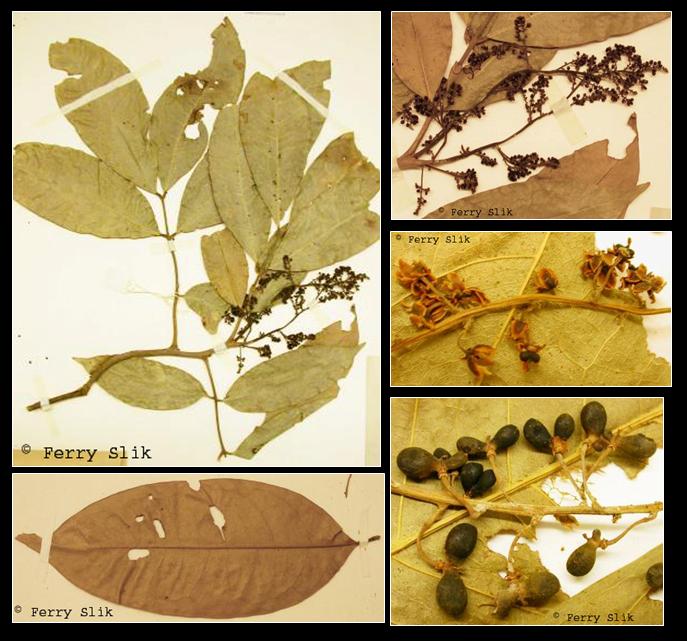Lepisanthes senegalensis (Poir.) Leenh., Blumea 17 (1969)
Latin for 'from Senegal'.Synonyms
Aphania angustifolia Radlk.
Aphania boerlagei Valet.
Aphania cuspidata (Blume) Radlk.
Aphania danura (Roxb.) Radlk.
Aphania dasypetala Radlk.
Aphania fascicularis Radlk.
Aphania loheri Radlk.
Aphania longipes Radlk.
Aphania macrophylla Radlk.
Aphania masakapu Melch.
Aphania montana Blume
Aphania paucijuga (Hiern) Radlk.
Aphania philippinensis Radlk.
Aphania senegalensis (Poir.) Radlk.
Aphania sphaerococca Radlk.
Didymococcus verticillatus (Lindl.) Blume
Euphoria verticillata Lindl.
Hydnocarpus tamiana Pulle
Nephelium verticillatum (Lindl.) G.Don.
Otophora paucijuga Hiern
Sapindus cuspidata Blume
Sapindus montana (Blume) Blume
Sapindus senegalensis Juss. ex Poir.
Sapindus verticillatus (Lindl.) Kurz
Scytalia danura Roxb.
Scytalia verticillata (Lindl.) Roxb.
Description
Trees or shrubs, evergreen, 4-6 m tall or more. Branches terete, glabrous. Leaves with petiole to 60 cm, axis strong, stout, grooved;
leaflets 3-6 pairs; petiolule ca. 1 cm, stout; blades olive-green when dry, ovate or ovate-lanceolate, 15-40 x 4-14 cm, subleathery,
glabrous, base rounded or sometimes nearly cuneate, margin entire, apex acuminate or shortly acuminate. Inflorescences axillary, usually
shorter than leaves. Pedicels 1-2 mm. Smaller sepals broadly ovate, 1.2-2 mm; larger ones suborbicular, 2.5-3 mm in diam. Petals 5 or
sometimes 4, purplish red, broadly ovate, 4-5 x 3-3.5 mm, apex rounded or subtruncate; scales ciliate. Stamens 8 or sometimes 7; filaments
ca. 1.5 mm, middle part slightly inflated, villous; anthers oblong, connectives slightly prominent. Ovary obcordiform, usually 2-lobed,
2-loculed; style short, stout; stigma shallowly 2-lobed. Fruit purplish red; fertile schizocarp ellipsoid, ca. 1.6 x 0.8 cm. [from Flora of China]
Ecology
In undisturbed to slightly disturbed (open sites) mixed dipterocarp, coastal
and swamp forests up to 600 m altitude. Often on alluvial sites and along rivers
and streams, but also on hillsides and ridges. On sandy to clay soils, but also
on limestone. In secondary forests usually present as a pre-disturbance remnant.
Uses
The wood is used as house posts. The roots are medicinal. The leaves are
used to make a shampoo. The fruits are edible.
Distribution
Tropical Africa, Madagascar, India and southern China to New Guinea. In
Borneo collected in Sarawak, Brunei, Sabah, South- and East-Kalimantan.
Local names
Borneo: Kilinga caba, Obah.
